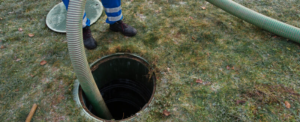The sale of this Custom Humvee at Barrett-Jackson Scottsdale underscores the allure of repurposed military vehicles. It also underscores the expertise of Street Legal Exports in navigating the legalities of owning a formerly military vehicle and turning it into a road-worthy beast tailored to your wildest automotive desires.
There’s something undeniably captivating about a Humvee. It’s big, powerful, and exudes an aura of strength and ruggedness that’s hard to match. However, for those who’ve always wanted to own one but have been stifled by its military origins, the good news is that there’s now a way to turn your dream into a reality. Thanks to Street Legal Exports, these raw and utilitarian vehicles can now be turned into sleek and powerful machines that are just as capable off-road as they are on the highway.

Getting your Humvee road-ready will involve some important upgrades that’ll make it more compatible with local laws and safety standards. This will likely include ensuring that its lighting configurations comply with regulations, as well as adjusting the vehicle to fit standard tire sizes and emissions requirements. Other modifications may include making sure that the vehicle meets state-specific requirements for seat belts, mirrors, and other accessories.
When it comes to making a Humvee street legal, it’s important to partner with an experienced company that understands the specific regulations and rules involved. These companies can ensure that your Humvee is up to code by undergoing a thorough inspection and testing process that’s tailored to your specific vehicle. They can also help you navigate the process of obtaining a title for your Humvee and register it with your local department of transportation.
Aside from ensuring that your vehicle is up to date with all necessary safety features, an experienced team can also add a wide range of customizations to enhance its performance and appeal. This includes adding custom roof racks and storage solutions to maximize cargo space, as well as improving its comfort with advanced climate control systems.
It’s no secret that a Humvee isn’t the most fuel-efficient vehicle on the market. But with a little help from a trusted team of experts, you can make your vehicle more efficient by lowering its carbon footprint. This can be done by installing a high-performance exhaust system, upgrading the engine’s torque, or implementing other mechanical tweaks. With these simple steps, you can enjoy your HMMWV’s power and capabilities while being environmentally responsible.
Engine Upgrades
Whether you’re tackling rugged terrains or simply cruising around town, a custom Humvee can handle it all. These military-inspired machines are a blast to drive, and their unique design also makes them a distinct statement piece. And because they often appreciate in value, owning one can be a lucrative investment. But while there’s a lot to love about a Humvee, some owners crave more power and control. And while you can always add accessories to your vehicle, engine upgrades offer an easy way to boost performance and improve handling.
Upgrades like a stronger sway bar can cut body lean when turning and make your vehicle more stable at highway speeds. Other engine improvements include a high-performance exhaust system that increases airflow, boosts horsepower, and gives your vehicle a more aggressive sound. And ECU tuning lets you reprogram your engine’s brain to optimize power, allowing you to tweak everything from fuel delivery to turbo settings.
Another way to increase the performance of your vehicle is by adding suspension upgrades. With these modifications, you can better handle rough terrains and long drives. And a new suspension system can even help you go off-roading in comfort and style.
Finally, you can improve the interior of your vehicle with upgrades like leather seats and a state-of-the-art entertainment system. This can make your Humvee feel more comfortable, especially if you spend long hours driving it.
With a little bit of work, you can transform your HMMWV into an ultimate off-road machine. And you can trust that Plan B Supply will follow stringent Department of Transportation (DOT) rules and multipoint inspections to ensure your build is safe for the road. To get started, contact us today. We look forward to working with you!
Exterior Makeover
When you think of the Humvee, you probably picture a bulky SUV towering over traffic on the highway. But this 2009 AM General military Humvee turned into a 6×6 creation by Danton Arts Kustoms and Frenchy Export isn’t your typical vehicle. It’s a race-inspired machine powered by a supercharged 6.2-liter Hellcat engine with 717 horsepower and connected to a 4-L80E automatic transmission.
The result is a street-legal machine that’s as comfortable on the highway as it is off-road. A custom front bumper and grille, a reworked rear section, and a custom paint job make this Humvee the center of attention wherever it goes. But it’s what’s under the hood that really sets it apart.
A beefed-up 6-liter V-8 features a Truck Norris cam for added power, while custom control arms and a 2-link with Panhard bar up front and Baer brakes in the back keep it in check. A set of 26-inch Asanti wheels with custom engraving by Las Vegas Engraving and Fullway tires add the finishing touch.
While this isn’t the first custom Humvee to turn heads on the highway, it’s certainly one of the most striking. It’s not hard to see why so many enthusiasts have fallen for the Humvee. It’s the perfect vehicle for a unique lifestyle, offering unparalleled capability and endless customization options.
Owning a Custom Humvee isn’t just about cruising down the highway; it’s about exploring hidden trails and embarking on road trips with friends. The Humvee community is vibrant, with countless online forums and social media groups filled with stories of epic adventures. These tales inspire new owners and offer firsthand accounts of the challenges and rewards of owning a military surplus vehicle.
The team at Street Legal Exports makes the process of transforming a military Humvee into a street-legal adventure machine easy and straightforward. Their experts handle all aspects of the build, ensuring your vehicle meets all legal requirements before delivery. They also provide financing options to suit your budget. Get in touch with them today to learn more about their services and to begin the journey of owning your very own custom Humvee.
Interior Comfort
Whether your Humvee is used for driving around town or for off-road adventures, many innovative upgrades are available to enhance the comfort and design of the interior. From seat upgrades to modern dashboards, these enhancements can help your HMMWV look and feel newer, increasing its longevity and resale value.
The original military Humvee was designed for functionality rather than luxury, with a spartan cabin featuring hard surfaces and utilitarian controls. While the rugged design of this vehicle is undeniable, many civilian owners prefer a more comfortable ride. Seat upgrades are a popular choice, with many options available that can boost comfort and support during long drives. Heated and cooled seats are another option, making the Humvee more practical for daily use in varied climates.
Civilian owners also often want more storage space than the original Humvee provides. Dash and center console organizers are a convenient way to add additional storage, while rear storage compartments can provide extra room for tools or equipment. A high-quality audio system is another popular upgrade, providing increased sound clarity and a more enjoyable driving experience. Many options are available for different styles and budgets, from basic speakers to full-on surround sound systems.
Other common Humvee enhancements include floor mats and liners, which can protect the vehicle from dirt and debris while offering a durable and stylish aesthetic. A roll cage is a safety-enhancing modification, increasing confidence for drivers when traveling off-road or in challenging conditions. Adding a snorkel can also make your Humvee more water-resistant, allowing it to drive underwater in the event of a flood or other natural disaster.
Choosing high-quality materials for interior upgrades can increase the longevity of your HMMWV, reducing wear and tear over time. Durable materials like leather and vinyl resist stains and moisture better than fabric, making them a smart investment for your refurbished military vehicle. While they may be more expensive than plastic alternatives, these premium materials offer the best blend of style and durability for your reconditioned military vehicle.








